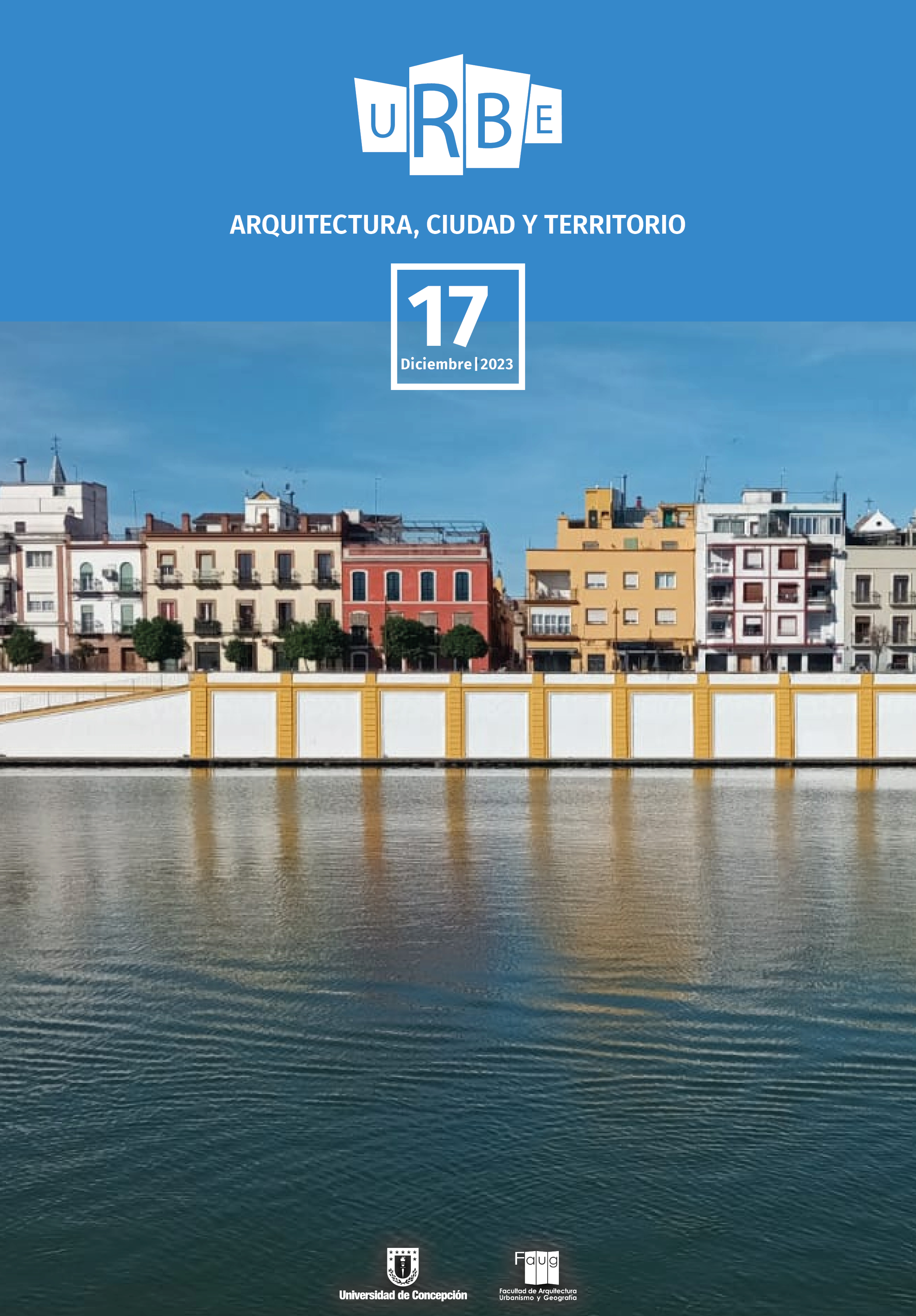The sociocultural value of urban vegetation in the Metropolitan Area of Santiago, Chile
DOI:
https://doi.org/10.29393/UR17-2VSDV20002Keywords:
Urban vegetation, ecosystem services, sociocultural valueAbstract
The urban vegetation present in squares, parks, and public spaces plays a crucial role in maintaining ecosystems within cities, providing benefits for human well-being known as Ecosystem Services. Therefore, the structure, distribution, and composition of vegetation are crucial to maximize these benefits.
In this context, it is recognized that in the Metropolitan Area of Santiago (AMS), urban vegetation primarily serves aesthetic and ornamental functions, consisting mainly of exotic species that are neither suitable nor sustainable for local landscaping needs. Despite the advantages offered by native flora, such as lower water consumption, adaptability to the local climate, immunity to pests, and support for biodiversity, there is a negative perception associated with its aesthetic value and functional utility.
Therefore, the study addresses the socio-cultural valuation of urban vegetation in the AMS, exploring the aspects that contribute to the determined value and the willingness to incorporate a different type of landscaping related to attributes of native flora, for the greater fulfillment of Ecosystem Services.
Downloads
References
Bolund, P., & Hunhammar, S. (1999). Ecosystem services in urban areas. Ecological Economics, 29(2), 293-301. https://doi.org/10.1016/S0921-8009(99)00013-0.
Cardenas, Z S., & Corrêa, R S. (2021). Importancia de los árboles en la planificación de Quito, Ecuador. Paranoá, (30). https://scite.ai/reports/ 10.18830/issn.1679-0944.n30.2021.15
Chan, K. M., Guerry, A. D., Balvanera, P., Klain, S., Satterfield, T., Basurto, X., Hannahs, N. (2012). Where are cultural and social in ecosystem services? A framework for constructive engagement. BioScience, 62(8), 744-756. https://doi.org/10.1525/bio.2012.62.8.7
De Groot, R. S., Alkemade, R., Braat, L., Hein, L., & Willemen, L. (2010). Challenges in integrating the concept of ecosystem services and values in landscape planning, management and decision making. Ecological complexity, 7(3), 260-272. https://doi.org/10.1016/j.ecocom.2009.10.006
Durán Sandoval, M. (2012). Medicalización, Higienismo y Desarrollo Social en Chile y Argentina 1860 – 1918. [Tesis doctoral publicada]. Universidad de Santiago de Chile.
Egas, C., Naulin, P. I., & Préndez, M. (2018). Urban Pollution by Particulate Matter and its Effect on Morpho-Anatomical Characteristics of Four Tree Species in Santiago, Chile. Información tecnológica, 29(4), 111-118. https://dx.doi.org/10.4067/S0718-07642018000400111
Fernández, I. C., De la Barrera, F., Figueroa, J., & Lazzoni, I. (2018). Biodiversidad urbana, servicios ecosistémicos y planificación ecológica: un enfoque desde la ecología del paisaje. Biodiversidad Urbana en Chile: Estado del arte y los desafíos futuros. Universidad Central de Chile, 113-146.
Figueroa, J. A, Teillier, S. Guerrero-Leiva, N., Ray-Bobadilla, C., Rivano, S., Saavedra, D., & Castro, S. A. (2016). Vascular flora in public spaces of Santiago, Chile. Gayana. Botánica, 73(1), 85-103. https://revistas.udec.cl/index.php/gayana_botanica/article/view/4053
Fish, R., Church, A., & Winter, M. (2016). Conceptualising cultural ecosystem services: A novel framework for research and critical engagement. Ecosystem Services, (21), 208-217, https://doi.org/10.1016/j.ecoser.2016. 09.002.
Goli?nik, B., & Thompson, C. W. (2010). Emerging relationships between design and use of urban park spaces. Landscape and urban planning, 94(1), 38-53. https://doi.org/10.1016/j.landurbplan.2009.07.016
Gómez-Baggethun, E., Barton, D.N., Berry, P.M., & Harrison, P. (2016). Concepts and Methods in ecosystem services valuation. En Potschin, M., Haines-Young, R., Fish, R., y Turner, K. (Eds.), Routledge Handbook of Ecosystem Services (99-111). Routledge.
Gobierno Regional Metropolitano de Santiago. (2014). Política Regional de áreas verdes. https://www.gobiernosantiago.cl/wp-content/uploads/2014/doc/estrategia/Politica_Regional_de_Areas_Verdes,_2014.pdf
Haines-Young, R., & Potschin, M. (2011). Common international classification of ecosystem services (CICES): 2011 Update. Nottingham: Report to the European Environmental Agency.
Hernandez, J., & Dobbs, C. (2015). Evaluación y Seguimiento de la Vegetación Urbana. Sustentabilidad y Biodiversidad Urbana. https://scholar. googleusercontent.com/scholar
Irarrázaval, F. (2012). The "green" imaginary and the urban green as a housing consumption instrument: setting up environmental conditions for the Santiago metropolitan area. Revista INVI, 27(75), 73-103. https://dx.doi.org/10.4067/S0718-83582012000200003
López-Rodríguez, M. D., Cabello, J., Castro, H., & Rodríguez, J. (2019, September 24). Social Learning for Facilitating Dialogue and Understanding of the Ecosystem Services Approach: Lessons from a Cross-Border Experience in the Alboran Marine Basin. Frontiers in Marine Science, 8. https://scite.ai/reports/10.3390/su11195239
Millennium Ecosystem Assessment. (2005). Synthesis Ecosystems and Human Well-being. World Resources Institute. https://www.millenniumassessment.org/documents/document.356.aspx.pdf
Méndez Ávila, B. (2018). Valoración sociocultural de los componentes de infraestructura verde y servicios ecosistémicos en la zona costera de Algarrobo, entre 1950 y 2016. [Tesis de magíster publicada]. Universidad de Chile.
Ministerio del Medio Ambiente. (2017). Tercer Reporte del Estado del Medio Ambiente. https://sinia.mma.gob.cl/wp-content/uploads/2017/09/REMA-2017.pdf
Montenegro, G., Grimau, L., Andureza, I., Cerna, N., Funes, I., & Jahn, I. (2016). Flora nativa como matriz biológica para mitigar impactos del desarrollo urbano: Valorización de especies vegetales. UC propone, 124-143.
Picón, M. C., De la Barrera, F., Reyes, S., Forray, R., & Berrizbeitia, A. (2017). Planificación ecológica en Santiago de Chile. ¿Qué tan lejos estamos? Clasificación de iniciativas de planificación territorial basadas en una breve revisión bibliográfica. Investigaciones Geográficas, (54), 105-126.
Red Árbol Urbano. (2018). Fundamentos técnicos/legales. http://leydearboladourbano.com/propuestas-de-la-red/propuesta-ley-de-arbolado-urbano-para-chile/fundamentos/
Reyes-Paecke, S. (2015). Contribución de la vegetación urbana a la calidad ambiental y la sustentabilidad en el área metropolitana de Santiago. En A. Carbonnell Torralbo, Ciudad y calidad de vida, Indagaciones y propuestas para un habitar sustentable. Editorial USACH.
Rovere, E. (2022, 30 de septiembre). Los canteros urbanos como parte del paisaje biocultural de Bariloche (Argentina): riqueza de especies y decisiones de manejo. Boletín de la Sociedad Argentina de Botánica, 57(3). https://scite.ai/reports/10.31055/1851.2372.v57.n3.37477
Van Riper, C. J., Landon, A. C., Kidd, S., Bitterman, P., Fitzgerald, L. A., Granek, E. F., Ibarra, S., Iwaniec, D., Raymond, C. M., & Toledo, D. (2017). Incorporating sociocultural phenomena into ecosystem-service valuation: The importance of critical pluralism. BioScience, 67(3), 233-244. https://doi.org/10.1093/biosci/biw170
Vásquez, A. E. (2016). Infraestructura verde, servicios ecosistémicos y sus aportes para enfrentar el cambio climático en ciudades: el caso del corredor ribereño del río Mapocho en Santiago de Chile. Revista de geografía Norte Grande, (63), 63-86. https://dx.doi.org/10.4067/S0718-34022016000100005
Published
How to Cite
Issue
Section
Copyright (c) 2023 Diego Requena Morales, Paola Velasquez Betancourt

This work is licensed under a Creative Commons Attribution 4.0 International License.
Revista URBE. Arquitectura, Ciudad y Territorio tiene licencia de Creative Commons Attribution 4.0 International (CC BY 4.0) y debe citarse correctamente.









